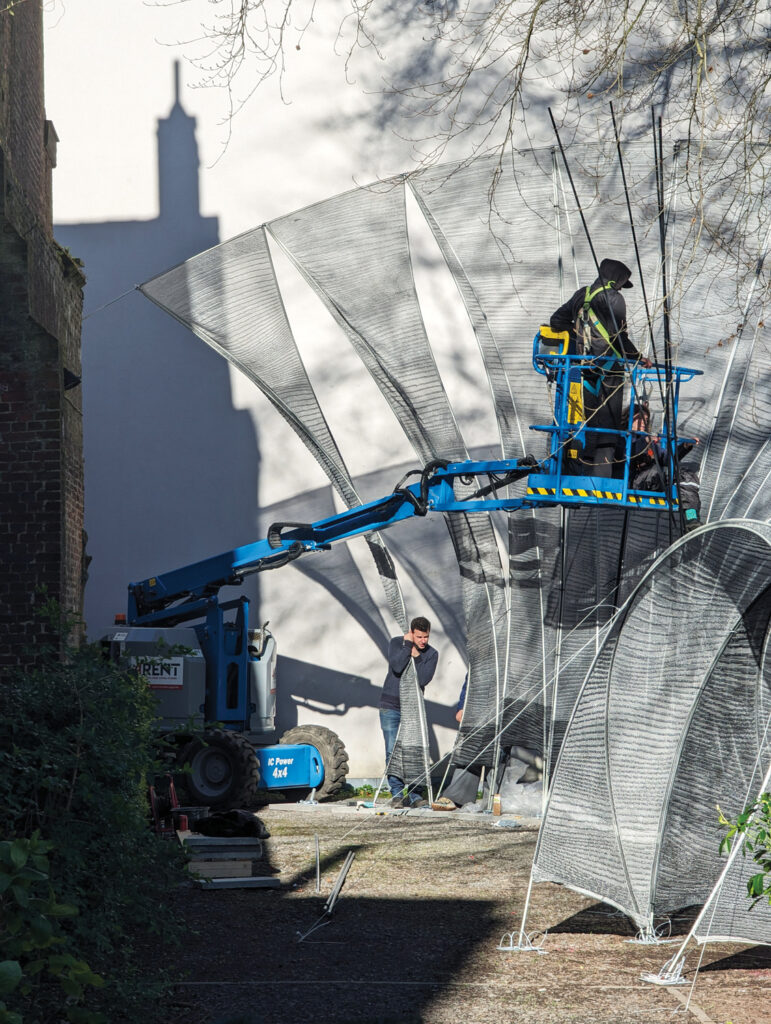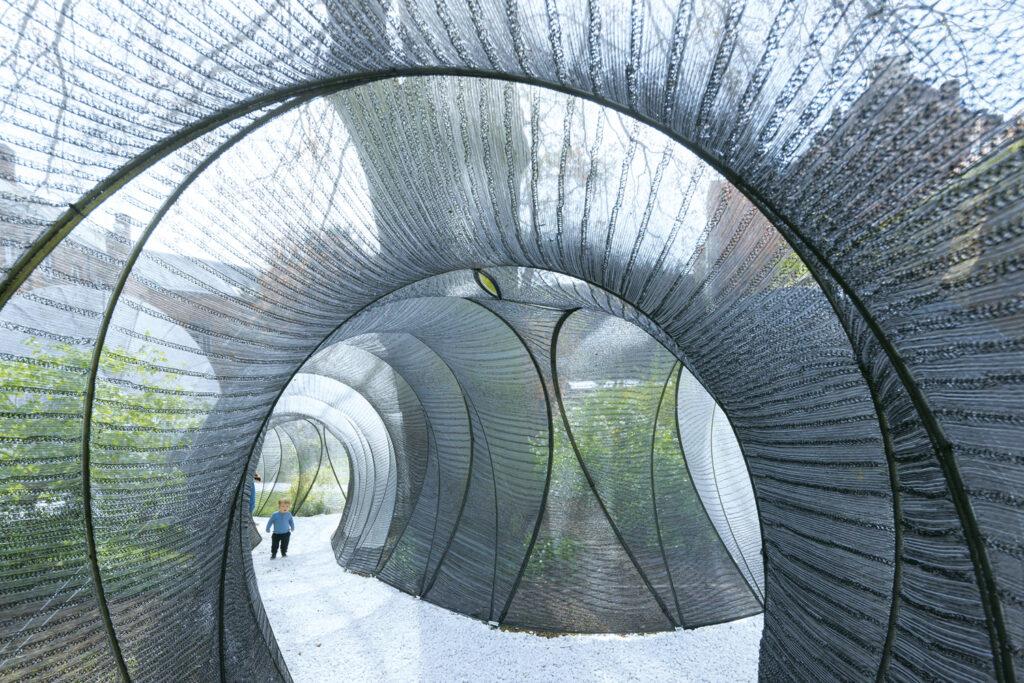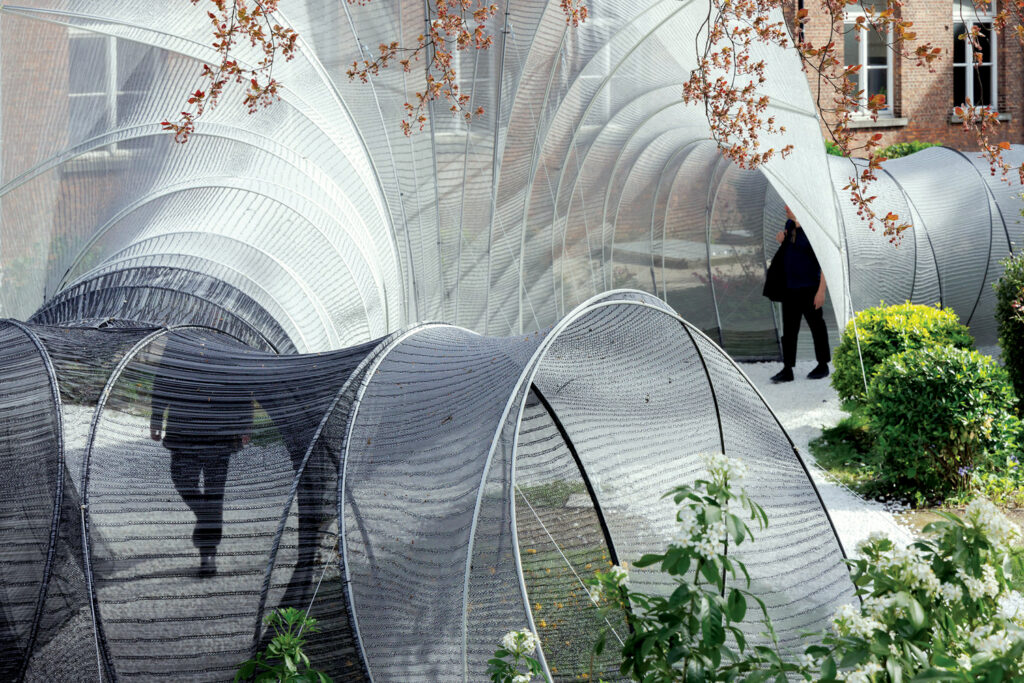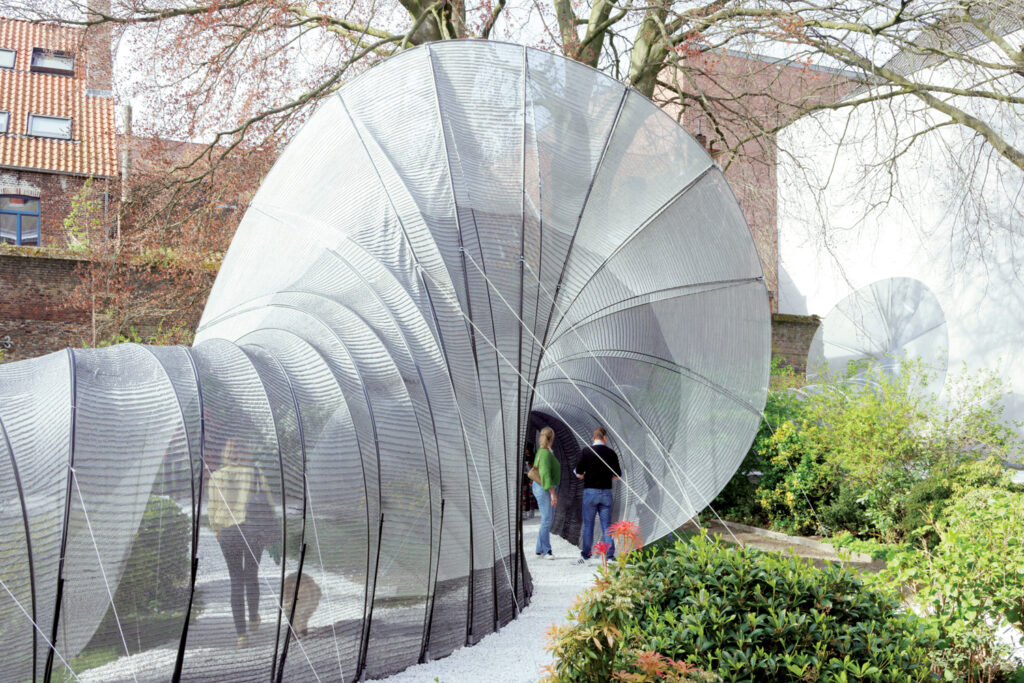As a part of the Bruges Triennial “Spaces of Possibility” art exhibition in Bruges, Belgium, this summer, design studio SO – IL incollaboration with Mariana Popescu, Ph.D., of TU Delft, showcased a 3D-knit immersive tunnel sculpture that took three months to produce. It was inspired by the city’s bobbin lacemaking legacy but reimagined on a huge scale with digital design and modern materials.

The rPET fiber passageway, titled Common Thread, winds its 300 square meters (3,229 square feet) through the secluded courtyard of a 19th-century monastery.

With restricted machine access to the site, the novelty of its application, and a small production team, “the ‘flips,’ which incorporate 6-meter [20-foot] high points, posed significant assembly challenges,” says designer Fabian Puller. “Ultimately the ‘flips’ were each assembled in two individual wall segments with two people on a cherry picker pulling them up and three on the ground keeping their ends in place.”

Winds also posed a challenge, at times trying to turn the knitted membrane into a kite. “To address this, we strategically incorporated carbon reinforcements of varying lengths and fastened steel tension cables to the tallest segments,” he says. “The load-bearing structure needed to balance flexibility for bending with sufficient stiffness to withstand wind gusts.” Ground anchors included long ground nails and wider ground screws, tailored to the local soil conditions.

The studio collaborated with Summum Engineering and Popescu’s team at TU Delft to evaluate simulations and materials to guide the form and structural framework of the piece. Popescu is known for researching textile formwork for concrete.

SO – IL is based in Brooklyn, N.Y., and has completed projects in cities as far-flung as Seoul, Korea, and Lisbon, Portugal. Its works are in the collections of the Museum of Modern Art, the Guggenheim Museum and the Art Institute of Chicago.

Bruges Triennial artworks by 12 international artists and architectural firms are on display until Sept. 1.







Leave A Comment